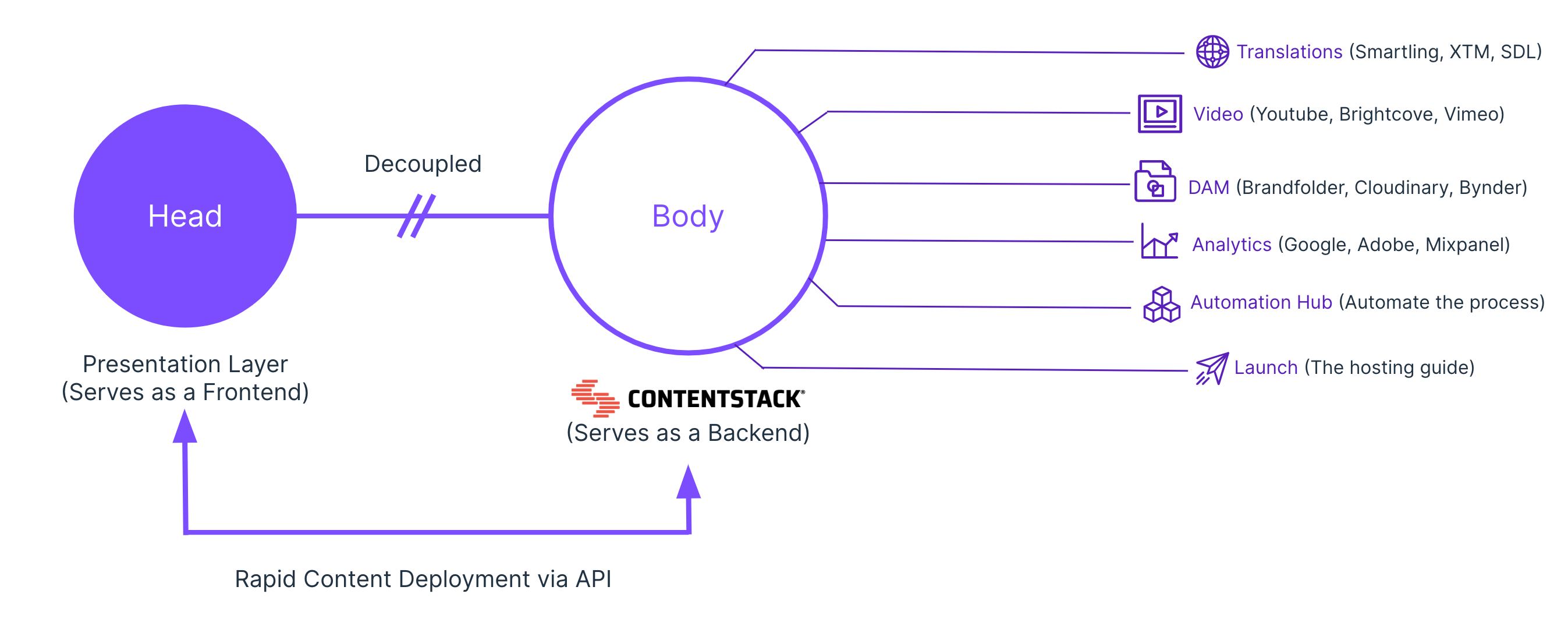Contentstack End User Training (EUT)
Headless and Composable Contentstack
Meet the Composable Heroes
Meet the Composable Heroes' Development Team Lead, Cyber Surge. She and her developers can easily create websites using any available technology but are missing an efficient way to create and manage content.


The Lightning Excavator, head of Marketing and Sales, identified that Contentstack could assist Cyber Surge in improving its content management process. However, the team needs assistance understanding how to leverage Contentstack's features to address their challenge. You must learn and demonstrate how Contentstack can assist the Composable Heroes in accomplishing their goals.
In this episode, you'll learn the basics of Contentstack and delve into its features and higher-level entities.
What is a Headless and Composable CMS?
A Headless CMS(Content Management System) is a CMS without the head, which means it provides all the backend tools needed to create and publish content via API. The "head" is the final presentation layer that is provided to a user when they visit a site.
A Composable CMS is a CMS that helps to integrate several technology vendors and services, providing omnichannel content delivery and limitless integration.
MACH architecture is a modern approach to building software systems that emphasizes flexibility, scalability, and interoperability, while also ensuring that a technology stack remains future-proof. It stands for Microservices-based, API-first, Cloud-native SaaS, and Headless.
How is Contentstack Headless and Composable?
Let's understand this using the below diagram:

Take into consideration the concept of a "Body" which operates as the backend repository, and a "Head" which functions as the presentation layer or frontend. Note that the Head and Body are independent of each other, and the deployment/publishing of content takes place through APIs.
Moreover, Contentstack facilitates seamless third-party integrations through its Marketplace apps. You can conveniently integrate various categories of service vendors such as Translations, Video, DAM (Digital Asset Management), Analytics, Commerce, Search, and more.
Examples of a few of the Integration Channels that Contentstack supports:
Translations - XTM, SDL, Smartling, and many more.
DAM - Brandfolder, Cloudinary, Bynder, and many more.
Video - Youtube, Brightcove, Vimeo, and many more.
Analytics - Google, Adobe, Mixpanel, and many more.
Commerce - BigCommerce, Salesforce commerce, Commercetools, and many more.
Search - Elasticsearch, Algolia, and many more.
While these are just some of the integrations you can achieve through the marketplace, as long as a service has an API, it can be connected with Contentstack.
Contentstack supports Automation functionality which enables the creation of a workflow that connects multiple web apps or services, including Contentstack. To achieve this, Contentstack has introduced Automation Hub, a visual builder for no-code/low-code workflows using an automation-based trigger and action system.
Contentstack also provides Launch as a platform that can help you host your website/app, thus providing a convenient solution for end-to-end content creation and management. Using Automation Hub together with Launch and Marketplace apps, Contentstack can serve as the nucleus where you can integrate and automate a whole ecosystem, while the various integration channels act as the electrons referencing necessary information. This unique capability is what makes Contentstack both an efficient and composable CMS.
In summary, Contentstack is a composable, API-based, headless content management platform that allows developers to speed up delivery and development time while simultaneously enhancing the content managers' ability to create and manage their content independently.
Real World Use Cases
You need a marketing or e-commerce page that can serve content on different channels like a kiosk, web, and mobile for various experiences and campaigns. It should handle several frontend technology frameworks, and be able to manage additional localized content to be served in other countries and languages. Combined with MACH architecture, Contentstack can help solve this real-world scenario.
